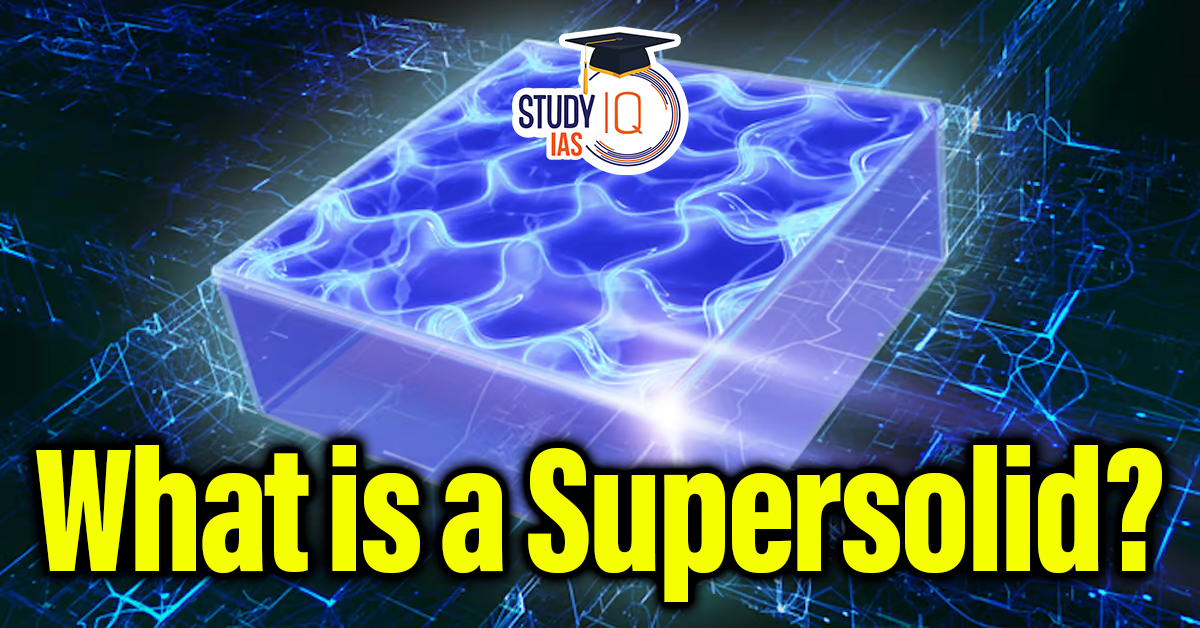Table of Contents
Context: For the first time, scientists have successfully turned light into a supersolid.
What is a Supersolid?
- A supersolid is a state of matter where particles are arranged in a crystalline solid structure but can also flow without viscosity, similar to a liquid.
- Viscosity refers to a fluid’s internal resistance to movement.
- In a normal solid, particles remain fixed in place.
- In a normal liquid, particles move freely but experience some friction.
- Supersolids are unique because they flow like a liquid while maintaining a structured, solid-like arrangement.
- Key Features of Supersolids:
- Solid-like structure – Particles arrange in an orderly lattice.
- Liquid-like motion – Particles can flow without friction (zero viscosity).
- Quantum behaviour – Exists only under extreme conditions due to quantum effects.
- To form a supersolid, materials must be cooled close to absolute zero:
- Absolute zero = -459.67°F (-273.15°C).
- At this temperature, heat energy is almost entirely removed, allowing quantum effects to dominate.
- Most liquids, like water or honey, have friction when they move. But some special materials, like supersolids, move without friction.
- Eg. Superfluid Helium: When helium is cooled to near absolute zero, it stops acting like a normal liquid. It can flow without resistance and even climb up the walls of a container.
Also Read: Quantum Dots
How Did Scientists Turn Light into a Supersolid?
- While supersolids have been made from atomic gases before, this research represents the first successful attempt to create a supersolid from light.
- Scientists used a type of “quasiparticle“ called a polariton, which is formed when:
- Light (photons) and matter (excitons) interact strongly with each other.
- This creates a hybrid particle that behaves like both.
Procedure
- Scientists trapped light inside a special material and made it interact with matter.
- This created polaritons, which act like a mixture of light and matter.
- Polaritons can behave like atoms—and when cooled down, they form a supersolid state.
| Why Are Supersolids Important? |
|


 Advanced Air Defence Radars: Types, Comp...
Advanced Air Defence Radars: Types, Comp...
 Ion Chromatography, Working and Applicat...
Ion Chromatography, Working and Applicat...
 Broadly Neutralising Antibodies (bNAbs):...
Broadly Neutralising Antibodies (bNAbs):...

























